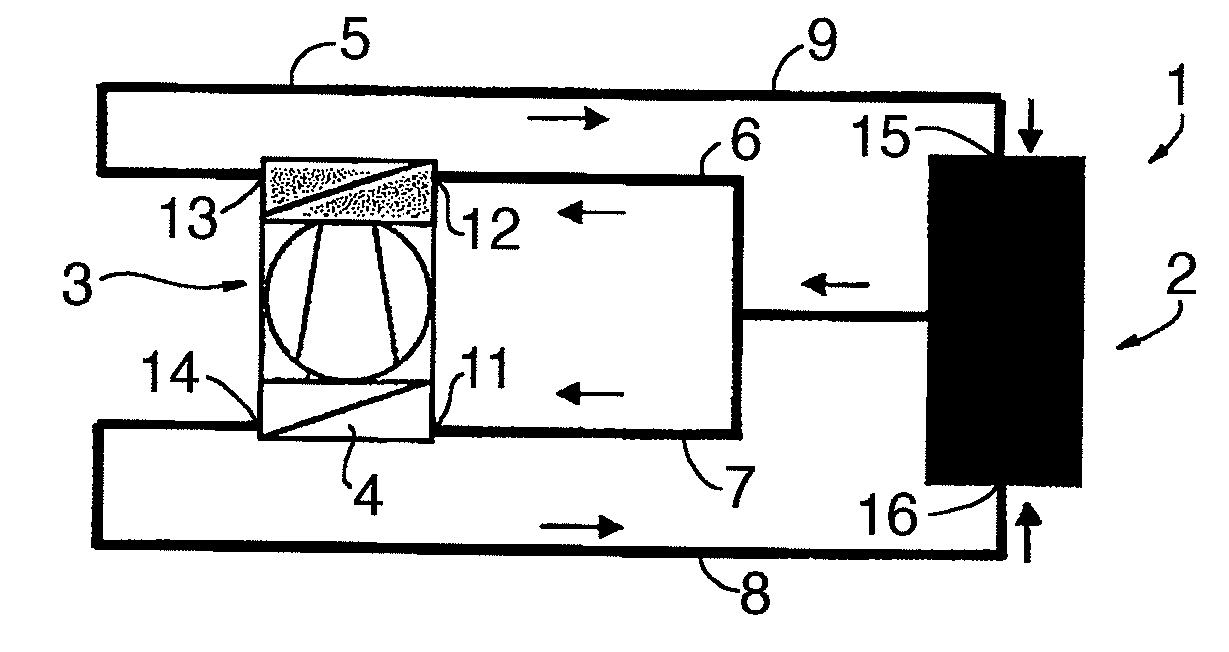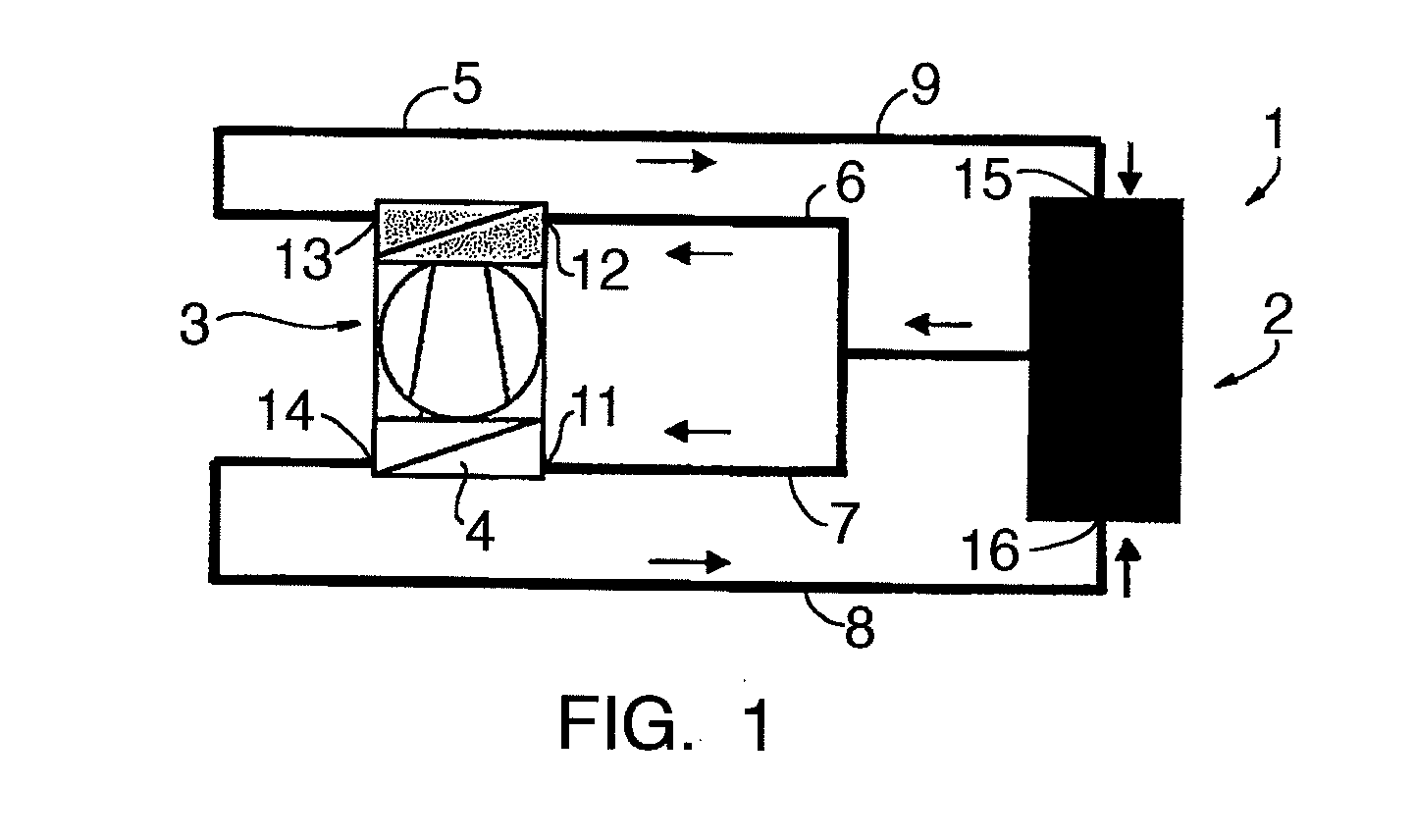Heat storage system
a technology of heat storage and energy storage, which is applied in the direction of energy-efficient heating/cooling, space heating and ventilation details, domestic heating details, etc., can solve the problems of insufficient energy level, inability to heat water sufficiently, and inability to draw as much hot water from the storage tank, etc., to enhance the stratification process of the storage tank, the effect of cheap thermal energy and energy-saving
- Summary
- Abstract
- Description
- Claims
- Application Information
AI Technical Summary
Benefits of technology
Problems solved by technology
Method used
Image
Examples
Embodiment Construction
[0028]To simplify the further discussion, all figures show temperature values. The values given are only examples of possible temperatures and / or temperature ranges, and are not intended to limit the invention in any way.
[0029]FIG. 1 shows a first possible embodiment of a heat storage system 1. The heat pump 3 is shown in schematic view, hence only a schematic of the circuit, the low-temperature part 4 and the high-temperature part 5 are shown. For a more detailed description of a heat pump 3, see FIG. 3, and description below. In short the heat pump 3 is able to transport heat from the low-temperature part 4 to the high-temperature part 5. FIG. 1 also shows a storage tank 2. The storage tank 2 is filled with a fluid. The fluid could be water or water with additives where the additives could have the properties of inhibiting bacterial growth in the water and / or the corrosive effect of water on the system and / or in other way preventing the water to change its physical and chemical pr...
PUM
 Login to view more
Login to view more Abstract
Description
Claims
Application Information
 Login to view more
Login to view more - R&D Engineer
- R&D Manager
- IP Professional
- Industry Leading Data Capabilities
- Powerful AI technology
- Patent DNA Extraction
Browse by: Latest US Patents, China's latest patents, Technical Efficacy Thesaurus, Application Domain, Technology Topic.
© 2024 PatSnap. All rights reserved.Legal|Privacy policy|Modern Slavery Act Transparency Statement|Sitemap



